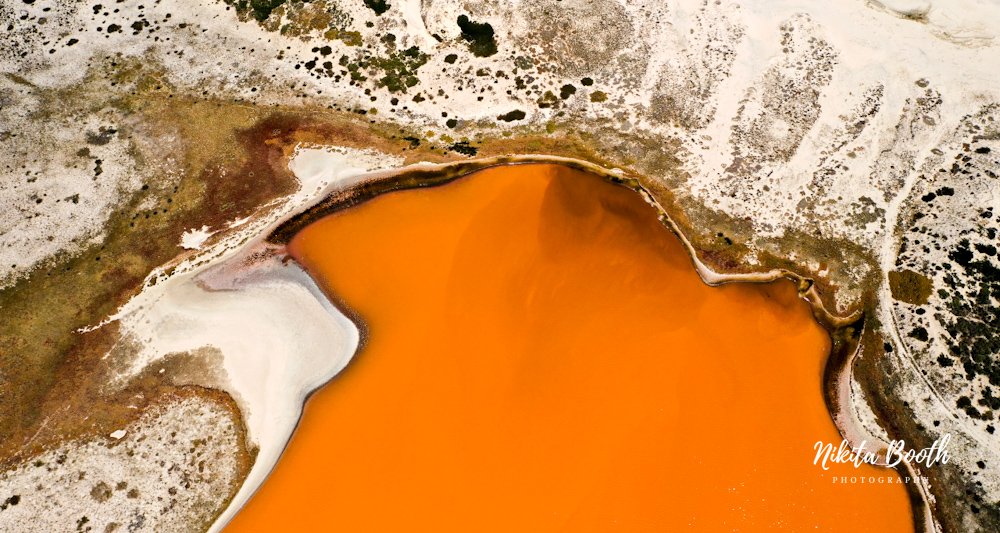Photographer spotlight: Kannetha Brown
Kannetha Brown is a force to be reckoned with and that's made even clearer when you look at her work and career. Kannetha is a Rhode Island based photographer whose work is heavily influenced by intimacy, womanhood and the politics of image making.
I had the pleasure of interviewing her about her work and the inspiration that drives her to create.
MR: Your work has featured in Vogue, Elle, Rolling Stone and other reputable magazines, what does it feel like to have your work appreciated and viewed by so many people?
KB: I’m extremely thankful for the publications and opportunities I’ve had over the past couple of years. With all honesty, none of them have truly hit me yet. I am always working and proceeding into the next activity or project. I don’t have a lot of time to process anything. Above anything, my age during the publications has been the most rewarding and humbling thing to reflect on. It means a lot, as a young woman of colour especially, to be noticed for work that people still don't want to label as fine art. It gives me a slight sense of security that I will be okay in the future, and that more publications are to come.
MR: I absolutely love your work, it has such a focus on feminist and political issues that affect us all - did you stumble into this style of photography or was it intentional?
KB: I only recently started making work that was explicitly dealing with feminist and political topics. From the beginning of my career, I noticed that it was easier for me to work with female-identifying people because I related to them. In turn, I noticed that there was a lot to research and say about that phenomena. A little over a year ago, I had a professor who really supported my photography and pushed the work I was making about women. That definitely helped me feel like there was a space and a need for these narratives in art and our society.
Vogue picture by Kannetha Brown
MR: In your piece Progress Portraits you asked your models about how their self-image and relationships with their bodies had grown over time - were there any answers that shocked you?
KB: Interviewing my friends, models, or any female-identifying people about their bodies will often, if not always, present answers that I have heard about before. It was more of a rewarding and connecting experience to inquire about my model’s relationships with their bodies rather than a surprising experience. Unfortunately, this society marginalises women at every turn in life. Before we are born, our bodies are commercial, overruled property of someone else. On some sort of level, a lot of women can relate to one another through experiences we share regarding negative relationships with our bodies.
I’d say though, that the most surprising moment for me in this project was learning about my models’ steps towards acceptance and liberation. It was mind-blowing to listen to one of my models explain how posing nude outside allows her to feel more connected to her body while navigating body dysmorphia. I instantly felt more connected to her when she explained that wind on her skin was the most amazing feeling. Hearing my models happy and experiencing this intimacy with them was so rewarding.
MR: Women are constantly used as tools and objects in the media, what steps do you think photographers can take to rectify this and ensure their subjects are more than just props on a 5.5 x 8.5 canvas?
KB: In my work with women and my experience identifying as a woman, I’ve discovered that one of the greatest tools in reforming gender inequality is the creation and circulation of imagery depicting women. The best thing a photographer can do is let a woman control the way she presents herself and refrain from portraying women in stereotypical ways that enforce unrealistic expectations. Growing up and being exposed to female imagery that is unrealistic in the body, diversity, message, etc. is extremely unacceptable for anyone to see. It absolutely molds our perception of what a woman is. A woman isn’t always made up or sexual. You don't need to make feminist art to make better photographs for the future of women, just capture every side of womanhood, and acknowledge that womanhood is different for everyone.
100 Visions of Motherhood by Kannetha Brown
MR: What inspires you to create?
KB: Right now, my inspiration is the feeling I get when I use analog equipment. I used to use strictly digital formats and had no interest in trying film until about a year ago. For some reason, digital seems like something I can't do well anymore. It’s addictive to wait for my film to get processed to see my results. Using different film formats is exhilarating, my cameras make me want to get up in the morning and shoot something. There’s absolutely nothing that can compare to the way analog formats look and make me feel.
I truly wish that photography, especially film, was more accessible to everyone. It definitely feels gated, in that it’s expensive and can be difficult to learn without access to certain facilities that are typically found in white, upper class environments. My place as a young woman of colour in the film community is inspiring to me, I feel a need to push myself deeper into this industry which doesn’t always highlight people that look like me.
MR: What made you fall in love with photography?
KB: I fell in love with photography at a very young age. I used to want to be a director or an actress. I did theater, dance, and made my own home videos as a child. When I gave up on those dreams or decided that they weren’t good fits for me, I felt as if I found a mix of everything in photography. Being able to choreograph for the camera and feeling like I have a natural ability to do it made me feel safe and excited to make art within a community.
MR: What photographers do you admire most, and why?
KB: My favorite photographers are all women. Petra Collins, Laurel Nakadate, and Pixy Liao to name a few. All of these women made work that spoke to me because it was different. Not only were they pushing major boundaries as women in the fine art industry, but they all presented such unique interests and styles that I feel are underappreciated because of their gender. Collins is an inspiration because her work defined the era of my late childhood. She did dance just like I did and found her place in art. Collins balances fine art and editorial assignments so well that she gives me a place to return home to whenever I’m made to feel like what I do isn’t enough to fit in. Nakadate and Liao are both Asian artists, that I can relate to, that broke the mold for what an image can be. Both challenged the male gaze in their photography in revolutionary ways. They all excite me.
Image by Kannetha Brown
MR: How would you describe your work?
KB: Influenced by womanhood and the politics of image-making, my work removes the boundaries between fine art, editorial, and commercial photography. Each piece is an intimate collaboration with my subjects.
MR: If you could work with anyone living or dead, who would it be?
KB: Honestly, I can’t answer this question. I have too many answers ranging all across music, fashion, and entertainment.
MR: What are you working on at the moment?
KB: I’m currently working on a lot of client work. In addition, I recently had my work exhibited in a BIPOC art gallery called “Take Space” presented by El Salon in Worcester, MA. Soon, I will be making art for Girl HAUS' September 2021 all-female show in Berlin.
MR: What has been your favourite work so far and why?
KB: I feel as if my favorite work right now is from early winter 2020, when I first started introducing 35mm film into my practice. This was before I moved off campus because of COVID, and I was shooting all of the time at my college’s studio space. I can’t really create those environments right now because of the pandemic-- I’m definitely reminiscing.
MR: What words of wisdom would you give to a budding photographer?
KB: My advice is to always try and make things happen for yourself. Chase a dream for years, doors come in all shapes and can open whenever, and take leaps of faith when chances seem slim. Communicate and connect with everyone in your field.
MR: Name three things you can’t do without?
KB: I absolutely need my film cameras, a good banh mi, and my phone for music.
You can follow Kannetha Brown here













Ready to take your photography career to the next level? Discover practical tips for female photographers on building your brand, standing out creatively, and overcoming industry limitations.